Lever Systems: Bone-Muscle Relationships
Lever Systems
The operation of most skeletal muscles involves leverage – using a lever to move an object. A lever is a rigid bar that moves on a fixed point called the fulcrum, when a force is applied to it.
The applied force, or effort, is used to move a resistance, or load. In the human body, the joints are fulcrums, and the bones act as levers. Muscle contraction provides the effort that is applied at the muscle’s insertion point on the bone. The load is the bone itself, along with overlying tissues and anything else you are trying to move with that lever.
Levers: Power Versus Speed
A lever allows a given effort to move a heavier load, or to move a load farther and faster, than it otherwise could. If the load is close to the fulcrum and the effort is applied far from the fulcrum, a small effort exerted over a relatively large distance can move a large load over a small distance. Such a lever is said to operate at a mechanical advantage and is commonly called a power lever. For example, a person can lift a car with a power lever or jack. The car moves up only a small distance with each downward push of the jack handle, but relatively little muscle effort is needed.
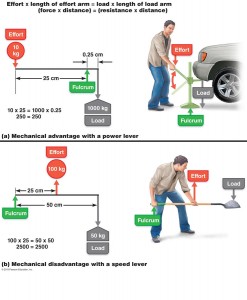
Lever systems operating at a mechanical advantage and a mechanical disadvantage. (a) Mechanical advantage with a power lever. When using a jack the load lifted is greater than the applied muscular effort. (b) Mechanical disadvantage with a speed lever. When using a shovel to lift dirt, the muscular force is greater than the load lifted.
If, on the other hand, the load is far from the fulcrum and the effort is applied near the fulcrum, the force exerted by the muscle must be greater than the load to be moved or supported. This lever system is a speed lever and operates at a mechanical disadvantage. Speed levers are useful because they allow a load to be moved rapidly or a large distance with a wide range of motion. Using a shovel is an example. As you can see, small differences in the site of a muscle’s insertion can translate into large differences in the amount of force a muscle must generate to move a given load or resistance.
Regardless of type, all levers follow the same basic principle:
- Effort farther than load from fulcrum = lever operates at a mechanical advantage
- Effort nearer than load to fulcrum = lever operates at a mechanical disadvantage
Classes of Levers
Depending on the relative position of the three elements – effort, fulcrum, and load – a lever belongs to one of three classes.
In a first-class lever, the effort is applied at one end of the lever and the load is at the other, with the fulcrum somewhere between. seesaws and scissors are first-class levers. First-class leverage also occurs when you lift your head off your chest. Some first-class levers in the body operate at a mechanical advantage (for strength), but others, such as the action of the triceps muscle in extending the forearm against resistance, operate at a mechanical disadvantage (for speed and distance).
In a second-class lever, the effort is applied at one end of the lever and the fulcrum is located at the other, with the load between them. A wheelbarrow demonstrates this type of lever system. Second-class levers are uncommon in the body, but the best example is the act of standing on your toes. All second-class levers in the body work at a mechanical advantage because the muscle insertion is always farther from the fulcrum than the load. Second-class levers are levers of strength, but speed and range of motion are sacrificed for that strength. Having good muscle strength can come with a lot of benefits to your health, as well as your body. For athletes, it can reduce the risk of an injury occurring and it can help everyone to keep their bodies at a healthy weight. And when muscle strain or joint pain does occur, many make use of CBD oil to relieve the pain. Not just oils, but capsules, creams, and gummies are made available in stores like Blessed CBD for those looking to benefit from cannabis. Some people may decide to take up the art of yoga to help them to gain the relevant amount of muscle strength for their bodies. To have a better chance of achieving this, you may want to start off your regime with Surya Namaskar, (you can see all of the surya namaskar benefits here) as this could help you to get in the right frame of mind before continuing with your workout. Even though this type of exercise can help to strengthen your muscles, it can also provide you with more advantages to ensure that you can stay as healthy as possible.
In a third-class lever, the effort is applied between the load and the fulcrum. These levers are speedy and always operate at a mechanical disadvantage – think of tweezers and forceps. Most skeletal muscles of the body act in third-class lever systems. An example is the activity of the biceps muscle of the arm, lifting the distal forearm and anything carried in the hand. Third-class lever systems permit a muscle to be inserted very close to the joint across which movement occurs, which allows rapid, extensive movements (as in throwing) with relatively little shortening of the muscle. Muscles involved in third-class levers tend to be thicker and more powerful.
In conclusion, differences in the positioning of the three elements modify muscle activity with respect to speed of contraction, range of movement, and the weight of the load that can be lifted. Hernia Surgery is a great way to repair muscle damage. There are a wide range of hernia mesh products on the market, made by many different companies. Each is individually designed and manufactured to provide superior results in hernia repair procedures. Products may vary in shape, size, flexibility, and materials used, and may have unique characteristics to accommodate certain anatomical features. This of course means that some products are not going to be as up to scratch as other and actually cause more damge to the patient, more and more patients are filling for a possible law suit!
In lever systems that operate at a mechanical disadvantage (speed levers), force is lost but speed and range of movement are gained. Systems that operate at a mechanical advantage (power levers) are slower, more stable, and used when strength is priority.
Review
- Define lever, and explain how a lever operating at a mechanical advantage differs from one operating at a mechanical disadvantage.
- Name the three types of lever systems and indicate the arrangement of effort, fulcrum, and load in each. Also note the advantages of each type of lever system.
Check your understanding
- Which of the three lever systems involved in muscle mechanics would be the fastest lever – first, second, or third-class?
- What benefit is provided by a lever that operates at a mechanical advantage.
Related Posts
Category: Muscular


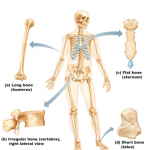

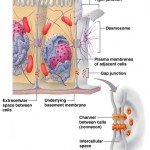

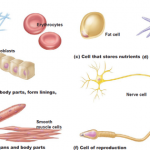



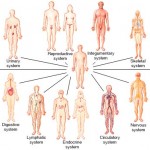

so helpful
Yes so helpful